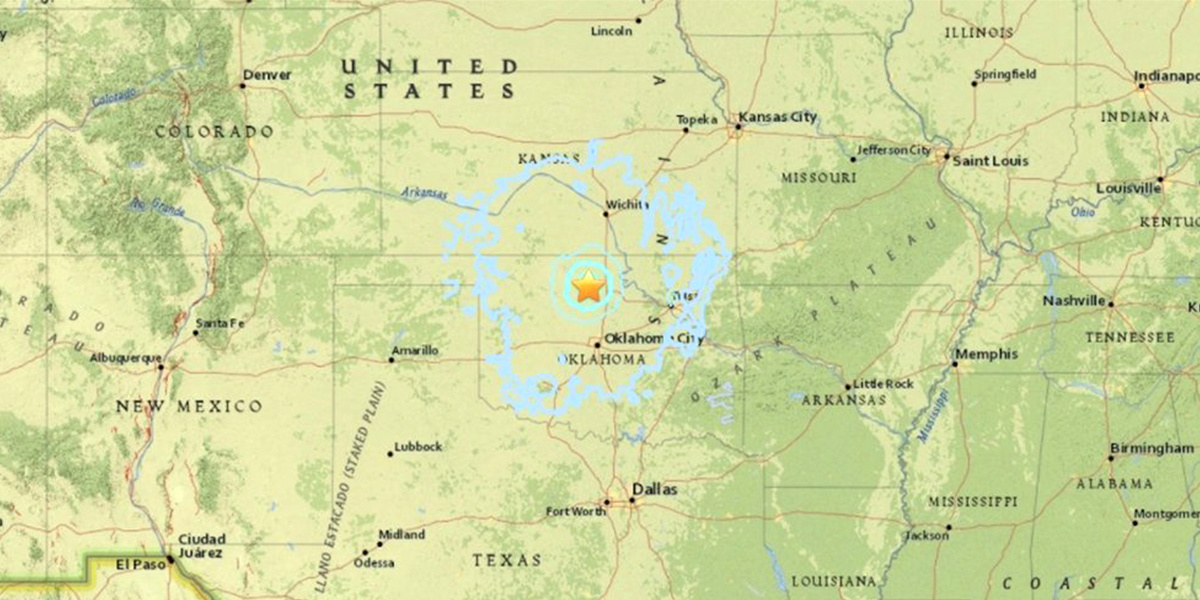
Two 4.2-Magnitude Earthquakes Rattle Northern Oklahoma in a Single Evening

USGS recorded two 4.2-magnitude earthquakes near Enid, Oklahoma on March 4.
Two 4.2-magnitude
earthquakes struck near Enid in northern Oklahoma Sunday at 5:17 p.m and 9:40 p.m., according to the U.S. Geological Survey (USGS). They are the largest recorded this year so far and even felt in neighboring Kansas.
The large quakes were followed by two smaller ones around the same area early Monday. The first was a magnitude 2.7 followed by 12:35 a.m. then magnitude 2.6 at 6:16 a.m.
At least one home in Breckinridge was damaged by the first earthquake. According to
Enid News, the home had major brick separation from doors and windows and other structural damage.
[facebook https://www.facebook.com/mallory.thomas.tv/videos/2121396831479923/ expand=1]
The 4.2-temblors are the largest in the state
since August 2017, when a swarm of earthquakes, including a magnitude 4.2, hit the central part of the state. There were five quakes of 4.0 or greater last year.
A tremor at that magnitude feels like a heavy truck striking a building, USGS
describes on its website.
Oklahoma has seen an alarming uptick in seismic activity that’s been linked to the injection of saltwater produced from oil and gas drilling activities into disposal wells.
State regulators have directed oil and gas producers in the state to close wells or reduce wastewater injection volumes. The regulations have worked
to a certain degree. While the Sooner State has dropped from two earthquakes per day to fewer than one per day, some of the post-regulatory quakes have been large and damaging. Two big ones happened in 2016: the 5.0-magnitude earthquake that struck Cushing, one of the largest oil hubs in the world, and a 5.8 that hit near Pawnee, the largest ever recorded in the state.
Tulsa World reported this week that if oil and natural gas prices begin to soar, wastewater injection could climb 40 percent more under a regulatory cap.
Wastewater injection limit set due to earthquake worries, but Oklahoma could get shakier if oil prices soar again https://t.co/g1FcrcPuPP #okquake #okquakes pic.twitter.com/FLlBWJ5tcX
— Corey Jones (@JonesingToWrite) March 5, 2018

 233k
233k  41k
41k  Subscribe
Subscribe 